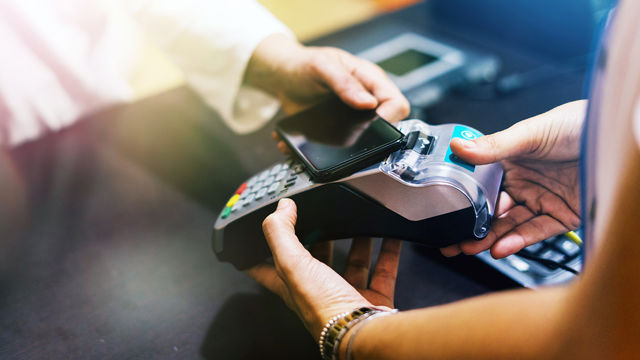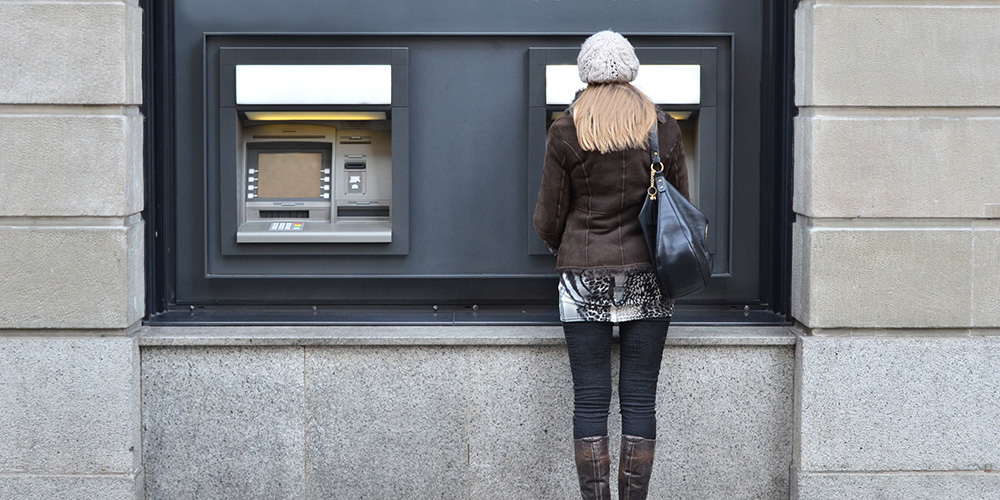
The future of online banking
Find out how emerging technologies are shaping the banking industry and what this could mean for the future of online banking.
15 December 2021
The world is changing, technology is advancing faster than ever before. In fact, 76% of people in the UK ¹ now use online banking, so it’s more important than ever for banks to innovate and find new ways it can reach customers when deciding the future scope of online banking.
New technology trends in online banking
There are several new technology trends in banking aimed to enhance how people interact with their banks and their money. In this blog, we’ll cover:
- Advanced self-service banking
- APIs and banking
- Biometrics
- Enhanced cyber security

Advanced self-service banking
Times have changed, and so have customer’s expectations. It’s not enough to expect customers to wait in line at branch and fill in forms. Plus, it’s not cost effective for banks to operate this way.
Banks can do more to empower customers to be in control of their money and one of the ways technology can help with through self-service banking. We already see self-service transactions happen on a regular basis, from transferring money to checking balances online but technology now allows banks to offer things such as:
- Self-registration - Barclays allows customers who are new to the bank to open their account straight from the Barclays App.
- Loans - By using big data and machine learning, banks such as Barclays are able to assess someone’s ability to pay back the loan, allow them to apply and take out loans online.
- E-signing - Complex products like mortgages can now be completed online, using services such as DocuSign, meaning people don’t need to physically send paperwork back and forth from the bank.

APIs and banking
We’re all connected in today’s society, from logging into shopping sites with your social media to booking your holiday accommodation, flights, hire car all from the same site. In order for your bank to work like this, they use APIs (application programming interface).
An API, put simply allows your data to be sent from one service to another, allowing you to seamlessly access other third party services. For example, if you login to your favourite site with your social media login, the social media platform will send over your name and the fact you’re already logged-in to their platform.
Open Banking was launched in 2018. Open Banking gives customers of UK banks more control over their personal data and who can use it.
Open Banking allows banks to connect with third party organisations to integrate their services and products, speeding up time it takes to bring products to the market and encouraging innovation.
You can find out more about Open Banking with Barclays here.

Biometric technology
Biometric technology has been widely used recently by smartphone makers, such as Touch ID, voice recognition and iris recognition. Biometric technology are biological measurements, providing potentially stronger security than passwords or PIN codes.
Hundreds of millions of customers are already using biometrics for mobile payments – and the number could reach 1.5 billion by 2023², according to a report published last year by Juniper Research.
At the same time, customers around the world have grown accustomed to biometrics in a variety of other contexts, including passports, national identity cards and voter registration.
Using biometrics instead of passwords means more security and less to remember, meaning they’re being made more and more popular. Banks are already using biometrics to make customer authentication easier but still secure. Barclays currently use biometrics with the Barclays App as well as a voice recognition service to identify who you are using your voice.
While biometrics have already seen widespread adoption, further developments are in the pipeline. Behavioural biometrics are a notable area of future focus. So far, biometric techniques have focused on physical characteristics – fingerprints, vein patterns and facial characteristics. But there is also interest in exploring the possibility of validating users based on behavioural patterns, including the rhythm of keystrokes on a computer. These factors may be even harder to fake than physical biometrics.
Meanwhile, some businesses are turning to invisible payments, which don’t require any device at all. In 2017, a KFC store in China trialled ‘Smile to Pay’, a facial recognition system that enables diners to pay by scanning their faces (and entering a phone number). In 2018, the system was rolled out to over 300 branches in China.³

Advanced cyber security
Fraudsters will continue to innovate their approach to online fraud and online banking continues to be a lucrative target for fraudsters. One of the biggest methods currently to access a victim’s account is through phishing; an email containing a link or attachment pretending to be from a trusted source so the victim gives away personal and banking details. These details are then stolen and used to access their accounts. You can find out more about phishing and other types of cyber crime in this Digital Wings module.
A lot of companies and banks around the world still use rule-based systems to detect fraud. If certain criteria are met, something is done. This can be an easy way to stop a lot of fraudulent transactions when you already know patterns of fraud, but as fraudsters change their tactics and change their patterns, you can’t rely on rules alone.
In order for fraud detection technology to be effective, it needs data. Lots of data. Banks and financial institutions use hundreds of pieces of information to catch fraudsters. By analysing and knowing what’s usual for the account holder, unusual transactions can be identified, and action can be taken.
Processing huge amounts of data can be expensive and labour intensive. That’s why banks may use machine learning. More and more financial institutions are investing in big data analysis and machine learning to process their data. For example, banks can analyse large volumes of transactional data and use machine learning algorithms to spot patterns and unusual behaviour.

What could the future of online banking look like?
We’ve touched on just some of the developments becoming available for customers to manage their money online, but what does this mean for the future of banking?
Advanced self-serve models will mean you’re more in control of your own money, using technology to manage where your money is and how you finance your life, yourself. The use of APIs mean you can easily integrate your finances into other companies – such as making payments to someone through social media, as well as continuing to protect your money through biometrics, both physical and behavioural, and enhanced cyber security using machine learning.
Future scope of online banking
It doesn’t stop there. From the launch of the UK’s first credit card and contactless payments to the world’s first ATM, Barclays has been transforming banking for the better for generations. One of the ways we are innovating the future of financial services is through technology. Whether it’s by using existing technologies to improve our products and services, or experimenting with emerging ones, like blockchain and quantum computing, Barclays is constantly evolving to improve the experiences of customers, clients and colleagues – and make a positive impact on society and economic growth.
To learn more, register for Digital Wings for free.
|
Learn more about the Barclays app.
|
¹ https://www.finder.com/uk/digital-banking-statistics
² https://www.juniperresearch.com/press/press-releases/future-smartphone-payments-to-rely-on-software-sec

